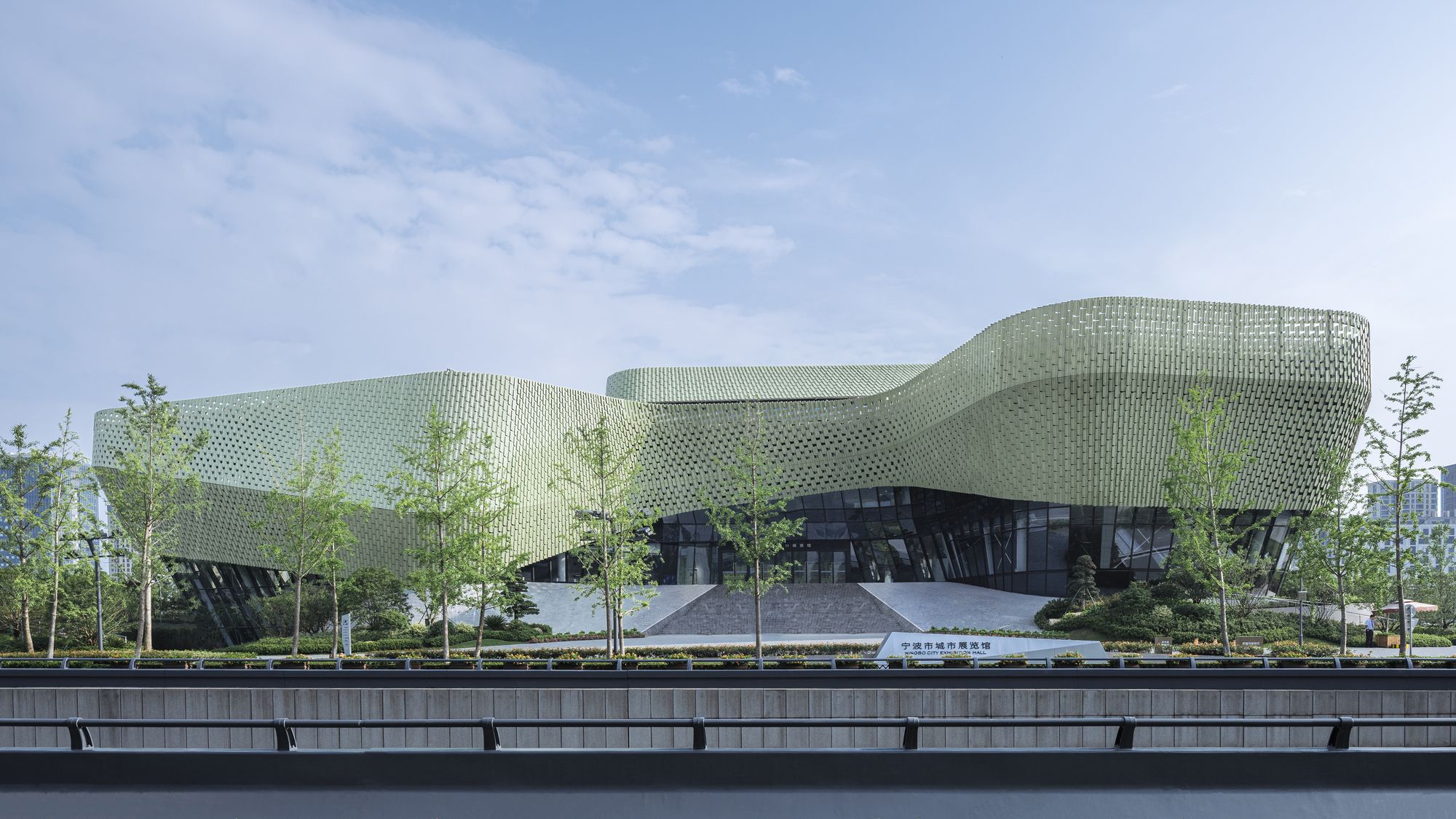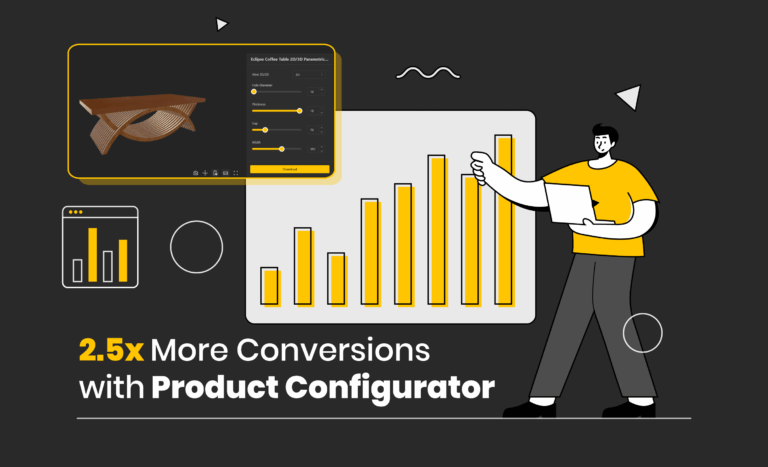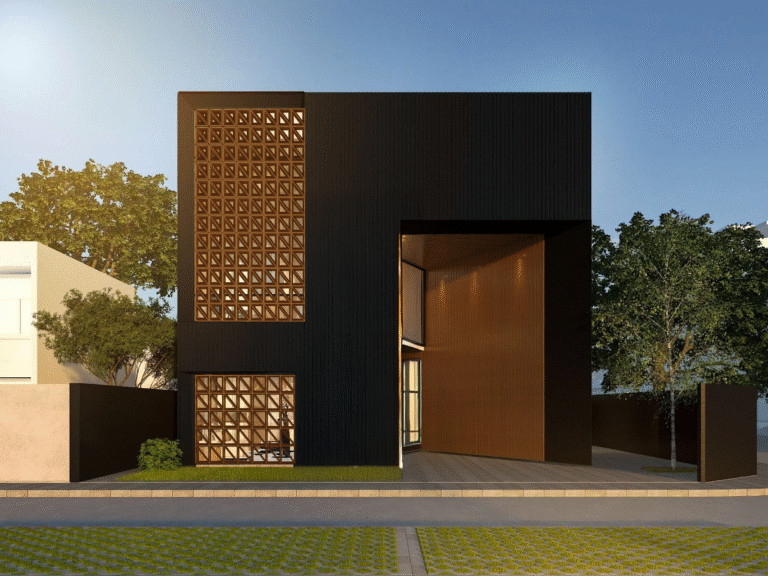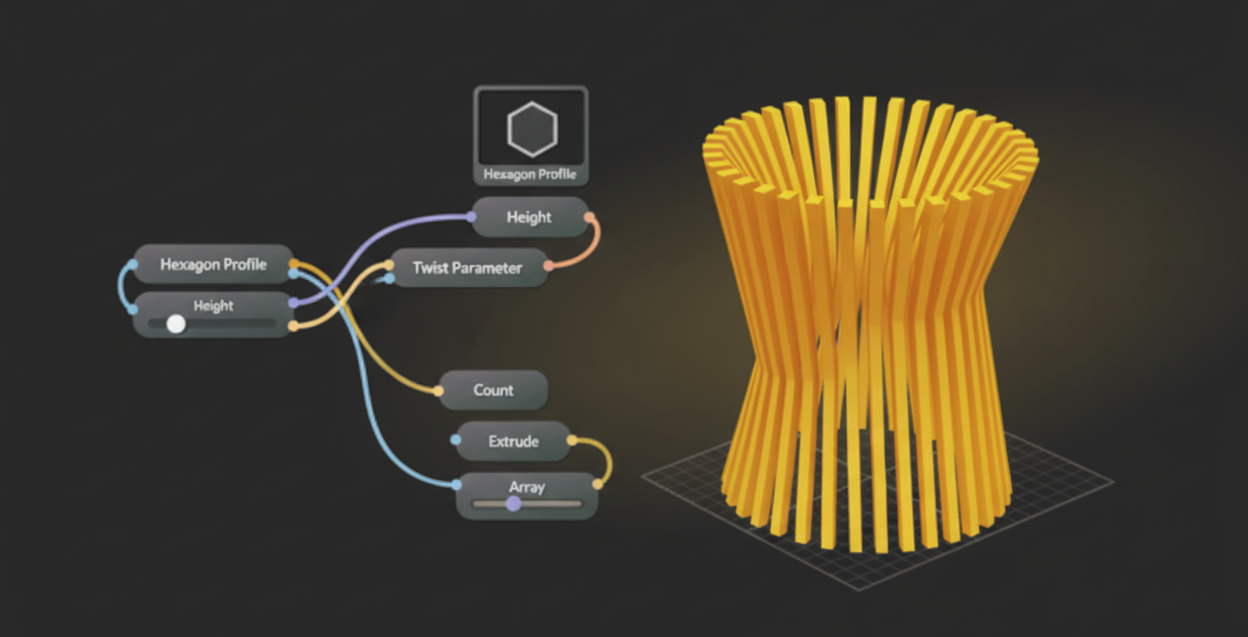Table of Contents
The stunning drop facade of Dongdaemun Design Plaza at Seoul, or the iconic curves of Frank Gehry’s Guggenheim Museum at Bilbao – both are classic examples of the use of Parametric Designs in architecture. The role of architecture is evolving rapidly with advancements in technology, and one of the most striking innovations has been the emergence of parametric design – and what we see today is just the beginning.
Parametric design through facades have redefined how buildings interact with their surroundings – making structures more responsive, efficient, and aesthetically unique. This blog explores the concept of parametric facades, current trends, and case studies that highlight parametric design applications in contemporary architecture.
What is Parametric Design?
At its core, parametric design is the use of algorithms to control the building’s design elements – this allows architects to explore a variety of complex forms and surfaces that become the facade, the face & envelope, of the building through computational design. These facades are adaptable, efficient, and striking in appearance – allowing the architecture to become an active participant in its context.
The parametrically designed architecture responds dynamically to environmental conditions, material constraints, as well as spatial parameters.
Key Benefits of Parametric Design
Key benefits of Parametric Design (Image Source: VIKTOR)
While Parametric Design is introduced by architects primarily as aesthetic elements, they can also respond dynamically to environmental conditions, material constrains, or even spatial parameters. Let us look at a few key benefits of this architectural style.
Customization and Flexibility
Parametric design allows architects and designers to create customized facades that reflect the building’s specific needs and its context. From sun-shading screens that respond to the solar path to energy-efficient double skins that adapt to climate conditions, these facades are not only functional but also tailored to each project.
Environmental Efficiency
Facades created with parametric design can optimize energy use – by controlling heat gain, light penetration, and airflow into the building – subsequently reducing the building’s environmental impact. These facades can adapt to climate conditions, reducing the need for mechanical heating, ventilation, and cooling – which makes the building less reliant on external energy generation, as well as cost effective.
Aesthetic Appeal
Few of the most visually captivating architectural forms seen today have been birthed through parametric design. With the ability to generate unique patterns, curves, and geometries, parametric facades have become synonymous with iconic architecture, helping buildings stand out in the urban landscape.
Trends in Parametric Design
When parametric design was born, it gained immense popularity due to its ability of giving architecture and other forms a unique design identity. Today, parametric design sees a rise in trends that grow beyond its mere aesthetic appeal – let’s take a look at a few such trends gaining popularity.
Sustainable Design Integration
A major trend in parametric design of facades is to allow the facade to be sustainable. Architects are increasingly focusing on facades that contribute to a building’s energy performance. For instance, biomimicry-inspired facades – designs that emulate patterns and forms from nature – are becoming popular due to their inherent efficiency in shape and environmental adaptability.
Responsive and Adaptive Facades
When parametric design meets smart technologies, buildings with adaptive & responsive skins are born. These facades change in response to environmental conditions. For example, dynamic shading systems that react to the sun’s intensity can significantly reduce the energy consumption of a building.
3D Printing and Material Innovation
Advancements in 3D printing and material sciences are expanding the possibilities for parametric design. Complex, geometrically optimized elements that would be difficult to construct through traditional methods can now be fabricated with precision, enabling new architectural forms.
Case Study 01: Ningbo Urban Planning Exhibition Centre, China

The parametric facade of the Urban Planning Exhibition in Ningbo is a continuation of its surrounding waterfront landscape (Image source: Arch2O)
The Ningbo Urban Planning Exhibition Centre in China showcases a compelling example of parametric design, leveraging advanced computational methods to craft a visually dynamic and functional architectural form. The building’s facade features an intricate, undulating pattern inspired by ocean waves, a nod to Ningbo’s coastal location.
Using parametric design techniques, architects generated a flexible and optimized skin structure that not only enhances the building’s aesthetics but also improves energy efficiency by modulating natural light and reducing thermal gain. This innovative approach enabled a seamless blend of form, function, and environmental responsiveness, making the center a landmark of sustainable and culturally relevant urban design.
Case Study 02: One Ocean Pavilion, South Korea

The dynamic GFRP parametric design of the One Ocean Thematic Pavilion brings life to the promenade within a former industrial harbor (Image Source: Frame Magazine)
The One Ocean Pavilion in Yeosu, South Korea, designed by SOM (Skidmore, Owings & Merrill), is another standout example of parametric design. The pavilion’s wave-like facade is inspired by the ocean, reflecting the theme of the 2012 Yeosu Expo. The process was to create a parametric design that allowed for a fluid, organic shape that responds to wind and sunlight.
The intricate pattern of the facade is not just visually striking but also functional, allowing for natural ventilation and the reduction of heat loads, which helps reduce energy use of the building. The pavilion serves as an example of how parametric design can bring together form and function seamlessly.
Case Study 03: BMO Centre at Stampede Park, Canada

The sweeping copper facade of the Stampede Park is reminiscent of the industrial era of Calgary (Image Source: Parametric Architecture)
The BMO Centre at Stampede Park in Canada uses parametric design to create a striking, modern architectural landmark in Calgary. The building’s design is characterized by a flowing, wave-like facade that draws inspiration from the surrounding Rocky Mountains and Alberta’s vast landscapes. Through parametric modeling, the architects optimized the structure’s form to enhance natural lighting, airflow, and energy efficiency, integrating seamlessly with the environment.
This approach also allowed for customization in the facade’s geometry, ensuring both visual impact and sustainable performance. The BMO Centre stands as a model of innovative design that reflects Calgary’s natural beauty while meeting the functional demands of a world-class event space.
Current Market Trends
Global Adaptation and Market Size
The parametric facade market is projected to grow significantly in the coming years, driven by the need for energy-efficient buildings and the desire for innovative, iconic architecture. According to recent reports by Vantage Market Research, the global market for dynamic and parametric facades is expected to reach approximately USD 44 billion by 2028, growing at a CAGR of 7.9% from 2023 to 2030. Europe and North America currently lead in the adoption of parametric facade technologies, but Asia-Pacific is rapidly catching up with the rise of smart cities and sustainable construction efforts.
Focus on Sustainability
As regulations around building performance become stricter globally, parametric facades will play a critical role in helping architects meet energy efficiency goals. Adaptive Tectonics suggests that buildings with parametric facades can reduce energy consumption by up to 30-40% compared to traditional building designs.
The Future of Parametric Design
Parametric facades are no longer a niche trend but are becoming a staple in modern architecture. As more architects and designers embrace this technology, the possibilities for innovation are endless. From improved sustainability to stunning aesthetics, parametric design is pushing the boundaries of what facades can achieve. With the rapid advancements in technology, material science, and sustainability efforts, parametric facades are poised to shape the skylines of the future.
The evolution of these dynamic systems reflects a broader shift in architecture toward responsive, efficient, and adaptable designs that not only serve aesthetic purposes but also address the pressing environmental challenges of today.
Beegraphy is an advanced, web-based platform that empowers architects, designers, and engineers to collaborate on parametric and computational design projects in real-time. Known as the “Google Docs for Computational Design,” Beegraphy provides tools to share, protect intellectual property, and even integrate projects across devices. By offering a unique configurator mode and an easy-to-use collaborative environment, Beegraphy democratizes access to parametric design, enabling users worldwide to innovate, create, and share seamlessly.










